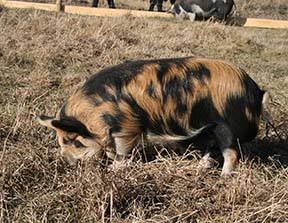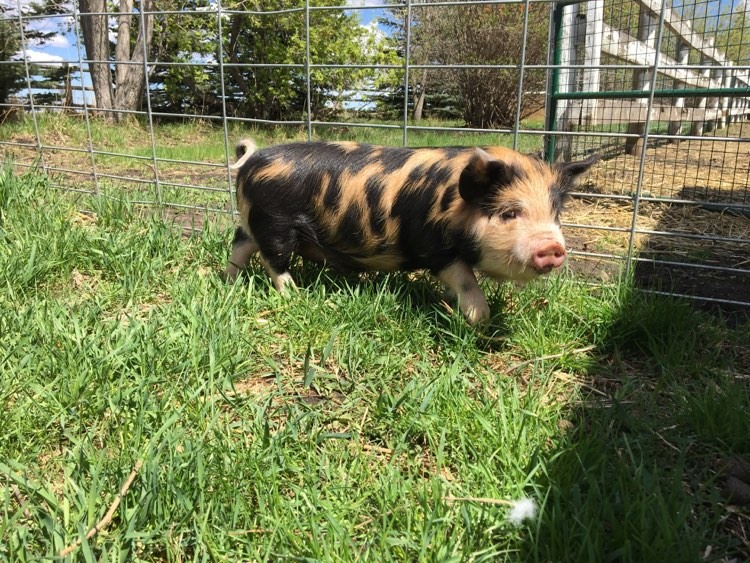Breeding management plays a key role in the success of pig production. Always start small, this way it provides time to learn all the necessary skills in each area of production. Breeding management has a very defined set of skills including heat detection, identifying illness, and ensuring proper body condition. This page will take you through a couple of key components in essential areas to achieve overall success.
Tips
- House boars individually and use extreme caution when handling them, especially when sows/gilts are present. Boars can be dangerous and unpredictable.
- One boar is required for every 20 females.
- Avoid potentially bringing disease from another farm. It is better to have your own boar rather than borrowing a boar from another farm.
- Heat checking helps to ensure that your sows/gilts are pregnant.
- Appropriate feed quality and quantity are important to maintain a healthy pregnancy. It is best to target a body condition score of 3 (see chart below).
Breeding
- One boar is required for 20 females.
- Place boar with females for at least 21 days to ensure breeding occurs.
- Boars will express interest for females in heat (smelling, mounting). They will not show interest in pregnant females or those not in heat.
- Females will experience a standing heat when they are ready to breed. A back pressure test by placing firm pressure on the hips of the sow or gilt. If she stands and doesn’t move she is most likely ready to breed.
Boar Care
- Use extreme caution when handling boars. Boars can be very aggressive and unpredictable, especially when sows/gilts are in heat. Sorting boards are recommended at all times for handling boars.
- House boars in separate pens.
- Place with sows/gilts only when breeding.
- Boars can sometimes be housed together when sows/gilts are not present, depending on their temperament.
- Do not overfeed your boars. Feed to achieve a body condition of 3.
- Purchase a boar for your own herd. Sharing breeding stock can bring unwanted disease from another operation.

Natural mating is the most common method of breeding. Ensure great care is taken when handling boars as they can be very unpredictable.

The back pressure test is one way of knowing when a sow or gilt is in heat. If she stands still when you apply pressure, she is likely in heat.

Ensuring your boar has optimal condition will help to achieve farrowing success.
Gestation
- Gestation length: 3 months, 3 weeks, and 3 days (116 days on average).
- Avoid mixing different groups of sows, especially within the first 28 days after breeding. This will minimize stress and aggression and limit problems associated with poor implantation of embryos.
- Vaccinate sows/gilts on a timely basis. See Section 9 for additional information.
- Feed to maintain an ideal body condition of 3.
Confirming Pregnancy
Heat Checking
- If possible, walk your boar past the desired (group of) sows.
- When a sow shows significant interest in the boar, and stands still when pressure is applied to her lower back, she is likely not pregnant.
- If not possible to use a boar, watch for mounting behaviour (riding), a swollen/engorged vulva, and/or clear vaginal discharge.
- Your veterinarian can perform an ultrasound as early as 25-28 days after breeding.
Gestation Complications
- Infections typically result in a thick, white vaginal discharge.
- Treatment will be required. Contact your veterinarian.
- Sow/gilt most likely not pregnant.
- Abortions are a loss of pregnancy after 55 days post-breeding.
- Record when they occur.
- Work with your veterinarian if you experience multiple abortions.
Body Condition Scoring

